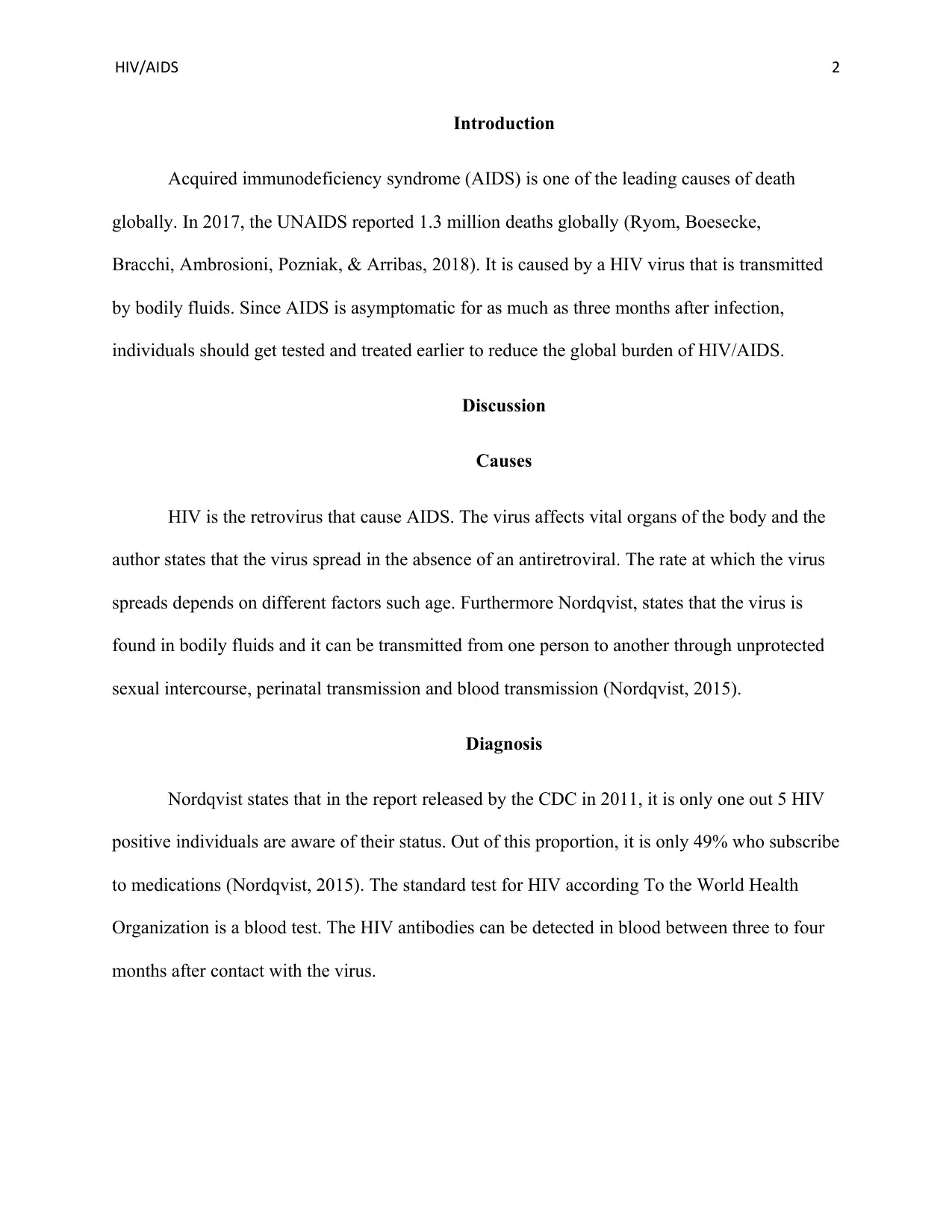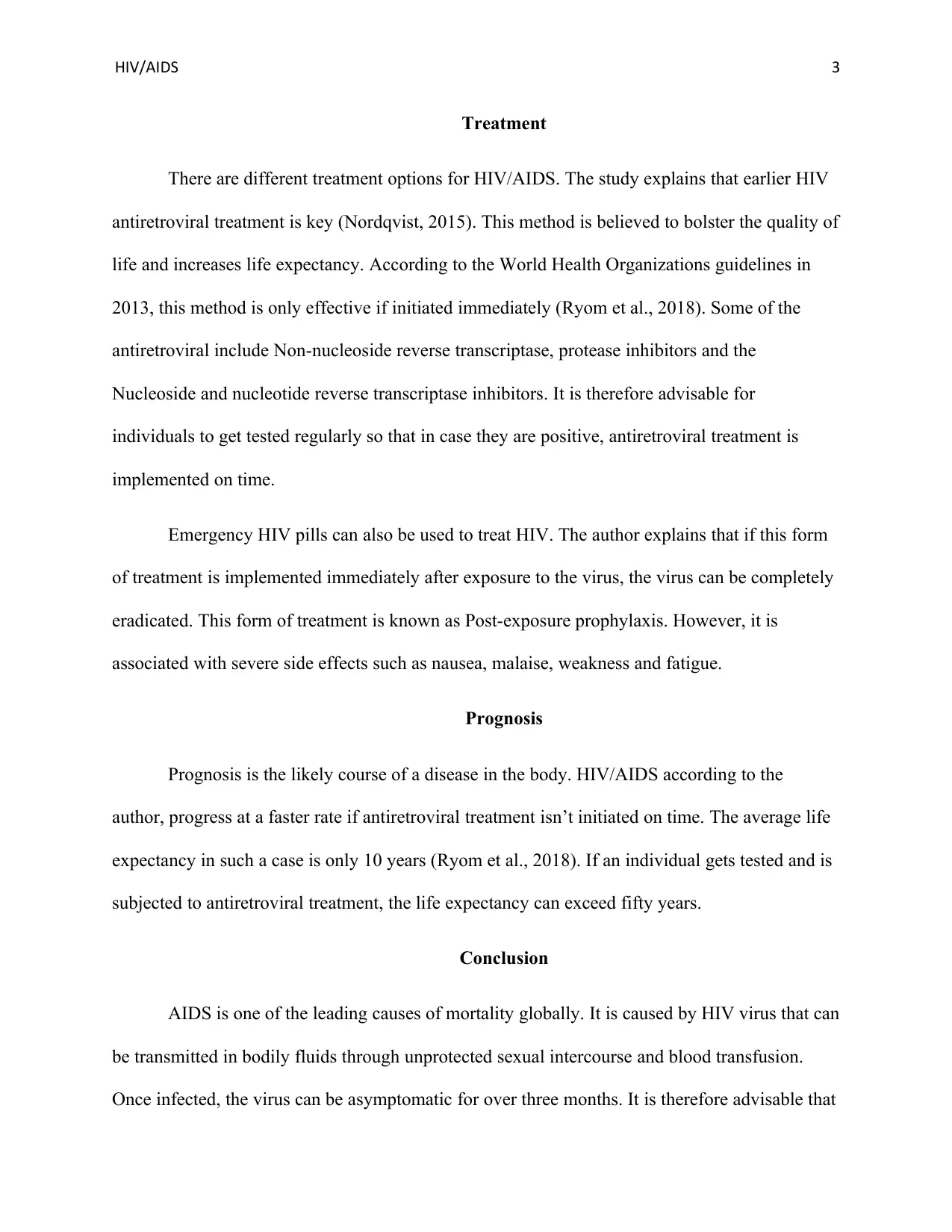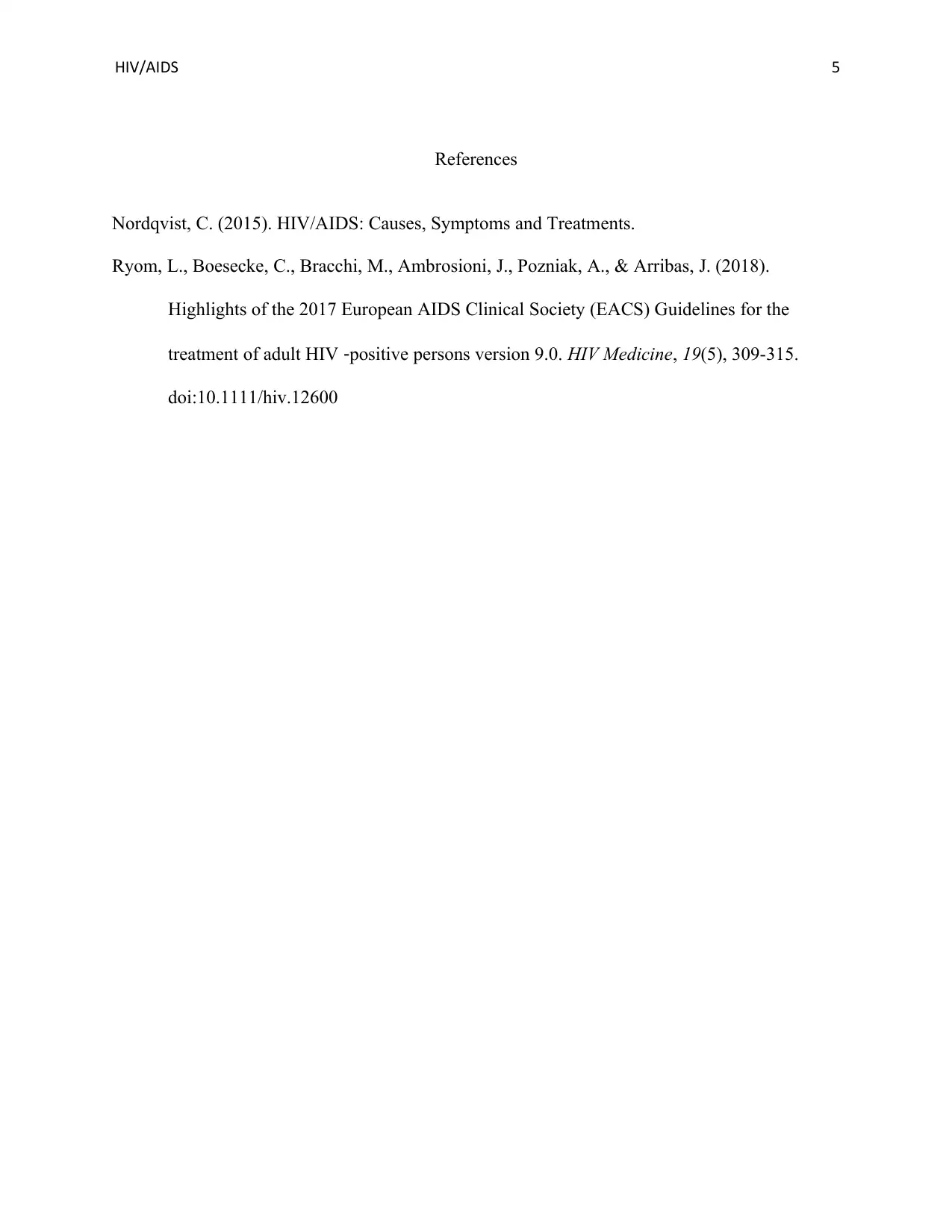Mini-Systematic Literature Review: HIV/AIDS - WCU Assignment
VerifiedAdded on 2023/03/23
|5
|689
|92
Literature Review
AI Summary
This literature review examines HIV/AIDS, a critical global health issue. The review synthesizes information from two scholarly articles, focusing on the causes, diagnosis, and treatment options for the disease. The assignment discusses the HIV virus, its modes of transmission, and the importance of early testing and treatment. It explores diagnostic methods, including blood tests, and various treatment approaches, such as antiretroviral therapy (ART) and post-exposure prophylaxis (PEP). Furthermore, the review assesses the prognosis of HIV/AIDS based on the initiation and effectiveness of treatment, highlighting the impact of ART on life expectancy. The mini-systematic review adheres to APA format, offering a clear and organized presentation of the reviewed materials.
1 out of 5












![[object Object]](/_next/static/media/star-bottom.7253800d.svg)